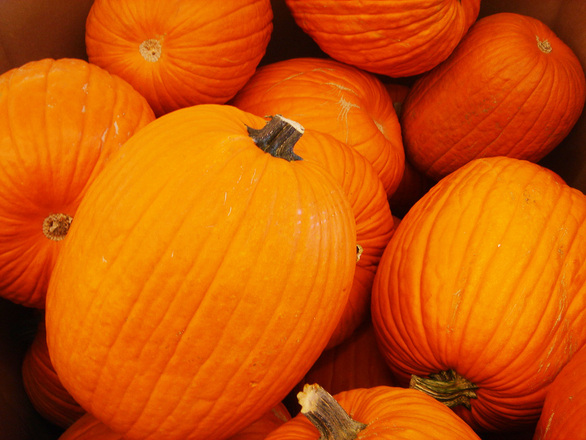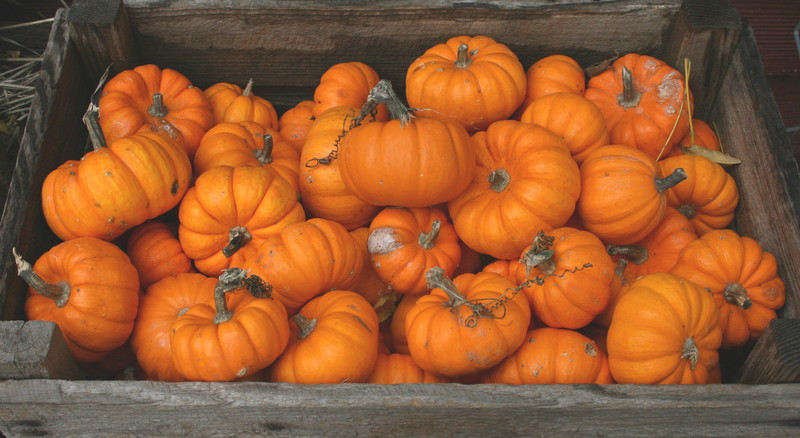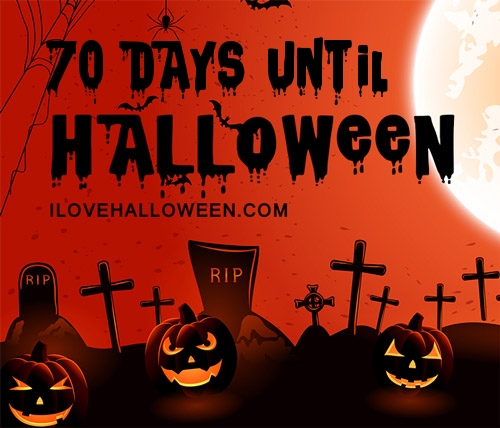I♥Halloween > Pumpkin Carving > Pumpkin Facts
Now that Halloween is around the corner, you can impress your friends and coworkers with the following list of facts about the beloved pumpkin!
Did You Know?
- All pumpkins are a variety of winter squash
- Pumpkin pie and commercial pumpkin pie filling is made from a different kind of winter squash than the kind of pumpkins commonly used to carve Jack-o’-Lanterns
- Originally, Irish and Scottish people celebrating Samhain (the forerunner of Halloween) made Jack-o’-Lanterns from turnips or beets
- The Headless Horseman in the Washington Irving story ‘The Legend of Sleepy Hollow’ doesn’t actually carry around a Jack-o’-Lantern under his arm in lieu of his head, and that this image was added later by an illustrator who never read the book
- Pumpkins come in the traditional orange color, as well as white and yellow varieties
- Millions of pumpkins are grown for animal feed
- The United States along produces 680,000 tons of pumpkins every year
- Canned pumpkin is used to treat dogs and cats suffering from digestive ailments
- In Australia and Britain, the word “pumpkin” can refer to any kind of squash
- The sport of pumpkin chunking involves building a machine to hurl a pumpkin as far as possible
- You can eat all parts of the pumpkin, including the shell, seeds, leaves, and flowers
- Pumpkin juice is a popular drink of the students in the Harry Potter series of books
- Pumpkins are cooked and eaten with butter, sugar and local spices in India
- Pumpkin pie is popular not just in the United States, but also in Canada
- The official Latin name of a pumpkin is Curcubita Pepo
- Pumpkins get their orange color from beta carotene
- The origin of the word pumpkin is the Greek word pepon (πέπων), which means “large melon”
- Starbucks first launched pumpkin spice latte in 2003
- Pumpkin leaves are used for a variety of soups in China
- Eating pumpkin seeds is a popular snack in Mexico, Europe, and China
- Pumpkins and all squashes are native plants of North America
- Early American colonists used to call pumpkins “pumpions”
- Pumpkin seed oil is used for cooking in Central and Eastern Europe
- Pumpkins are grown on every continent except Antarctica
- The traditional pumpkin used for Jack-O’-Lanterns is the Connecticut Field variety
- Pumpkin enthusiasts have cultivated a special kind of pumpkin, called Curcurbita maxima, just to win botanical prizes for the largest pumpkins ever grown
- Pumpkins are a rich source of Vitamin A
- Pumpkins are 2% protein
- The top pumpkin producing state in America is Illinois
- The word “pompom” in English is derived from the French word for pumpkin, meaning something round and large
- 95% of all pumpkins grown to make pies and pie filling come from Illinois
- The brand Libby’s is the most popular in America, and is a subsidiary of the Swiss multinational company Nestle
- Pumpkins rely on bees to fertilize their flowers via cross pollination
- Some individual pumpkins have been measured at over 2,000 pounds
Pumpkin Varieties
- Sugar – Most often used for baking
- Mini – Makes for great decoration
- Gourds – Many varieties of this, used for decorations
- Jack O’ Lantern – most common for carving
- White Lumina – unusual, medium-sized white pumpkin





Recent Comments